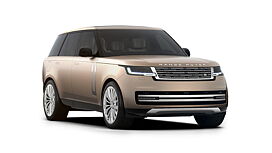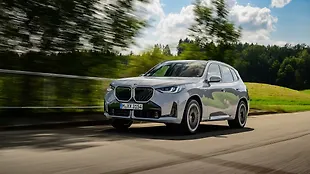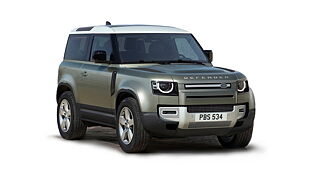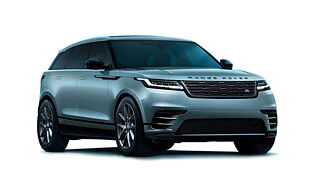What is it?
It’s always exciting when the flagship model of any manufacturer enters a new generation. And in this age of SUVs, nothing is more exciting than a new Range Rover, the OG big daddy of high luxury riders.Arriving just a short while after the moniker completed its 50th anniversary, this new Range Rover looks like a significant step up from the previous car. It was launched in India just three months after the global reveal in October 2021, and we have finally had a chance to take a closer look. Here is everything you need to know.
What’s new on the outside?

This is perhaps one of the biggest changes that Land Rover has made to the Range Rover in this modern era. In wanting to keep the design timeless, they have removed a lot of the exterior bling and design elements in favour of smooth lines; so smooth, in fact, that a first glance would leave you to believe that this car is a prototype. The face is dominated by new sleek full-LED headlamps while the signature Range Rover grille and green Range Rover logo sit proudly in the middle. It’s a familiar look, but thanks to the sleeker headlamps, you can easily tell that this is the new generation car.

The most significant change is visible in the profile, where there are hardly any lines visible. In fact, the only two major design elements visible on the side are the black cladding on the flared wheel arches and a chrome element towards the front of the car. The car that we had a chance to preview was running 185/45 R22 wheels, one of the largest on offer in India. This shouldn’t come as a surprise as it has become a common trend to “bling” up the Range Rover with massive aftermarket wheels sporting intricate patterns.

At the rear, the minimalism is a tad bit lesser thanks to the chrome bezel around the boot lid or at least that’s what it looks like until you step on the brake pedal/turn on the lights and realise the black elements on the side are the brake lamps. Other highlights include the chrome strip below the number plate slot and a chrome bash plate element. This minimalist design is a brilliant step considering that among those who can afford it, the Range Rover is one of the most heavily customised vehicles making this somewhat blank canvas a ready-to-go piece. In the larger scheme of things, the minimal lines mean the car’s exterior design will age well when it’s time to move to the next generation of the vehicle.
What’s new on the inside?

Where the outside is about minimalism, the inside has a visible opulence befitting the status of a Range Rover. Our Autobiography trim diesel model that we got to examine had been fitted with a caramel-coloured interior scheme. Up front, it is the typical Range Rover fare with large dual digital displays dominating the proceedings on the dashboard. Both are HD quality, and initial impressions point to a very user-friendly experience for both screens. Oddly enough, this flagship model has dials and buttons for the climate control system. We had expected a newer version of their InControl Touch Pro Duo system to continue with this generation. Nonetheless, the interface is straightforward to use thanks to the bright colours, gloss black background and large buttons and dials.

The second row of this Range Rover is what it’s all about, and they have provided quite a good experience. You get 24-way electrically adjustable captain seats with heating and cold massage function, individual cup holders and a central tablet to control all the operations of the back seat. Topping this is, of course, a Boss mode that lets you adjust the left-rear seat into a semi-bed-like state. The front passenger seat moves completely forward while the rear seat reclines, and the front footrest moves up to give that semi-reclined position.

For the first time, Land Rover has opened up the new Range Rover to include an optional third row. While our test car did not have this, with the amount of space inside, it was pretty evident that the third row would have an acceptable amount of room and be usable. Further, the seats fold flat into the floor, offering a tall and wide cargo area with multiple storage spaces and cubby holes.
What about the feature list?

This is, of course, Land Rover’s flagship SUV, which means it gets an exhaustive feature list worthy of the Rs 2.32 crore starting price or, in the case of our test car, Rs 3 crore (ex-showroom). As is evident in the pictures, you get multi-zone climate, leather upholstery and high-quality plastics, 24-way adjustable captain seats for the second row, wireless charging, 3D surround camera, wireless Apple CarPlay and Android Auto and Heads-Up Display.

On the convenience front, you get adaptive cruise control, adaptive air suspension, all-wheel steering, powered gesture tailgate, panoramic sunroof Terrain Response 2 system and their ClearSight Ground View, which is essentially a camera under the car for better information about the terrain. All versions get nine airbags, ABS with EBD, a traction control system and connected car technology.
What’s under the hood?

This new generation Range Rover can be had with either 3.0-litre turbo petrol, 3.0-litre turbo diesel or if you want to go the whole way, a 4.4-litre twin-turbo V8. They have outputs ranging from 395bhp to 524bhp. An eight-speed AT and AWD system is standard for all three engine options. Later in the year, we also expect a full hybrid version and an electric model that will be a first for the British Marque.
Pricing

When writing this review, prices for the Range Rover family start at Rs 2.38 crore and go all the way to Rs 3.43 crore for the LWB 4.4-litre V8 engined seven-seat model in the Autobiography trim level. The car that we have looked at is a five-seat LWB Autobiography diesel model that is priced at Rs 3.16 crore. All prices mentioned in the story are ex-showroom.



























